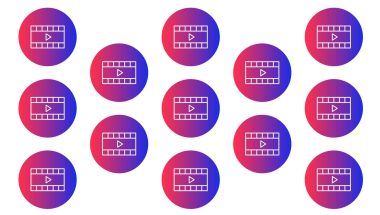- | 3:00 pm
3 leadership principles that build trust
Technology alone can’t build relationships. People, and the supportive behavior they demonstrate, play a huge role.

The extraordinary global and oftentimes anxious environment most of us have been living and breathing for the past two and a half years is pushing people to rethink their priorities, both personally and professionally. This moment shines a spotlight on an emerging workplace crossroads, where employees’ wants and needs intersect with their employer’s ability and willingness to respond and accommodate. What sits at the epicenter of this crossroads? Mutual trust.
Building trust is no easy task—even in the simplest of times—and today’s complex hybrid work environments make it even more challenging. The in-person interactions that accelerate trust-building are now fewer and farther between, making technology that helps connect people a crucial centerpiece for trust-building. But technology alone can’t build relationships. People, and the supportive behavior they demonstrate, play a huge role.
I led PwC’s ambitious digital transformation beginning in 2017 as we saw the landscape of work changing. From there, we learned that a successful transformation brings humanity and technology together to solve important problems and hinged on three critical leadership principles: transparency, delivering on investments and commitments and inspiring people to develop new ways of working.
LEAD WITH TRANSPARENCY
Leading transformation efforts of any kind requires elevating employees’ needs alongside those of the organization. And though you can’t always achieve a perfect win-win, being transparent about why you’re making efforts and investments goes a long way toward building trust and employee buy-in.
At PwC, we set a strategy to upskill our workforce for future success, no matter where their career journey took them. First, we took stock of the skills our people had and gained a better understanding of the skills we needed in order to take our business where it needs to go. We had conversations at every level about the skills they had versus the skills wished to have, and any areas of their work they felt could be automated to free up time for higher-thinking tasks.
Although this was new and different territory for our employees, we built trust by bringing them into the conversation, adding milestones, implementing new incentives and weaving in as much fun and creativity as we could. We discovered that the biggest source of energy and creativity was delivered by our emerging workforce of “citizen developers,” who were busy using new tech and skills to solve the problems faced by our clients and our firm.
DELIVER ON COMMITMENTS AND INVESTMENTS
If you make the decision to transform your business, you need to deliver on the transformation. Incomplete measures or programs that produce little or no benefit to the business can quickly deliver the opposite of their intended effect. They can disillusion your workforce, undermine your organization’s agility and competitiveness, and weaken trust.
To help enable widespread adoption of our firmwide upskilling initiative, we offered day-long technical workshops, on-demand learning modules and access to third-party resources that were curated by topics or skills. We also created Digital Lab, a virtual environment that houses automations, bots, and other digital assets to help improve business functions or work done by clients, built by our people.
We know that 53% of leaders are investing in digital transformation and automating the daily tasks that take away from time that employees can spend being more productive and creative. For us, our methods for timesheets, calendars, and desk reservations were antiquated and time-consuming. So, taking advantage of our own solutions built by our people, we deployed a virtual digital assistant. This helped to simplify necessary clerical tasks and unlock time for employees to do higher value work.
INSPIRE NEW WAYS OF WORKING THROUGH TECHNOLOGY
We can all tell our people to work differently, but that usually leads to the uninspired response of, “How do you want me to do it?”
Instead of dictating how people should do their jobs, empower your employees by equipping them with new skills and technology and encourage them to share all the new ways they get their work done with their colleagues.
Continue to nurture their growth by identifying areas for them to stay competitive and take closer looks at company-wide initiatives that may need a digital refresh. Putting the power in the hands of your employees will not only better the health of the business but also build sustained trust.
Business leaders should respond to today’s challenges by evaluating how their organizations use technology to deepen human connections, and to embrace these outlined principles to strengthen trust within their workforces.
If the last couple of years resulted in technology being the primary connector of people, the future will require us to figure out what a hybrid workplace truly looks like. This new dynamic is why we talk about being human-led but also tech-powered. Your business cannot, and should not, be limited to one or the other.






































